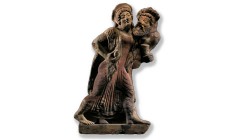Suzie Thomas
Publications

Thomas, S. (2014) ‘Comments on Josephine Munch Rasmussen: “Securing cultural heritage objects and fencing stolen goods? A case study on museums and metal detecting in Norway”’, Norwegian Archaeological Review, 47(2), pp. 196–199.

Thomas, S. (2014) ‘Vulnerable by design: theft and Finnish architecture’, The Historic Environment, 5(3), pp. 231–244.

Thomas, S. (2014) ‘Movement of cultural objects in and through Finland: an analysis in a regional context’, European Journal on Criminal Policy and Research.

Thomas, S. (2013) ‘Brian Hope-Taylor, the Council for British Archaeology, and “The need for adequate archaeological propaganda”’, Public Archaeology, 12(2), pp. 101–116.

Thomas, S. (2013) ‘Editorial: portable antiquities: archaeology, collecting, metal detecting’, Internet Archaeology, 33.

Coombes, M., Bradley, D., Grove, L., Thomas, S., and Young, C. (2012), ‘The Extent of Crime and Anti-social Behaviour affecting Designated Heritage Assets’, Report (English Heritage).

Thomas, S. (2012) ‘Archaeologists and metal-detector users in England and Wales: past, present and future’, in Skeates, R., McDavid, C. and Carman, J. (eds.) The Oxford Handbook of Public Archaeology. Oxford: Oxford University Press, pp. 60–81.

Thomas, S. (2012) ‘Conference review – Objects and landscape: understanding the medieval through finds recorded by the Portable Antiquities Scheme’, The European Archaeologist, 38, pp. 35–38.

Thomas, S. (2012) ‘How STOP started: early approaches to the metal detecting community by archaeologists and others’, in Moshenska, G. and Dhanjal, S. (eds.) Community Archaeology: Themes, Methods and Practices. Oxford and Oakville: Oxbow Books, pp. 42–57.

Thomas, S. (2012) ‘Searching for answers: a survey of metal-detector users in the UK’, International Journal of Heritage Studies, 18(1), pp. 49–64.

Thomas, S. (2010) ‘Nighthawks and dayhawks: heritage thieves with metal detectors’, The Archaeologist, 77, pp. 16–17.

Thomas, S. (2009) ‘Introduction’, in Thomas, S. and Stone, P.G. (eds.) Metal Detecting and Archaeology. Woodbridge: The Boydell Press, pp. 1–12.

Thomas, S. (2009) ‘The relationships between archaeologists and metal-detector users in England and Wales: impact of the past and implications for the future’, Ph.D. thesis, Newcastle University.

Thomas, S. (2009) ‘Wanborough revisited: the rights and wrongs of treasure trove law in England and Wales’, in Thomas, S. and Stone, P.G. (eds.) Metal Detecting and Archaeology. Woodbridge: The Boydell Press, pp. 153–166.

Thomas, S. and Stone, P.G. (eds.) (2009) Metal Detecting & Archaeology. Woodbridge: The Boydell Press.

Thomas, S. (2006) ‘Building bridges on Tyneside, June 2005’, Public Archaeology, 5(4), pp. 253–256.
Encyclopedia Entries
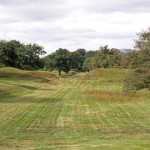
Antonine Wall
One of the few places in Scotland where unauthorised metal detecting has been recorded to have taken place is on the Antonine Wall.
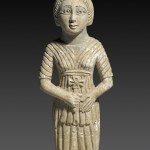
Brooklyn Museum and Fake Coptic Art
Brooklyn Museum was considered to have one of the largest and most significant collections of Coptic Art in the world, until serious doubts were raised over the authenticity of many of the pieces.
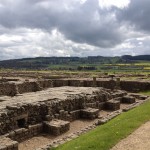
Corbridge
Corbridge has one of the most documented histories of instances of nighthawking in the United Kingdom.
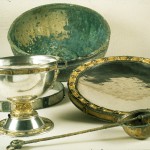
Derrynaflan Hoard
One of the most spectacular hoard discoveries in Ireland, which led first to an increase in enthusiasm for metal detecting as a hobby, but ultimately contributed to the prohibition of unlicensed searching for archaeological material.

Egypt 2011
Egypt’s rich archaeological heritage has always struggled with the impact of the ‘illicit antiquities trade and illicit excavation’ (Shyllon 2011: 136). The uprisings of 2011 exacerbated this problem.
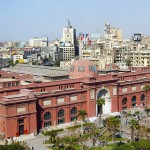
Egyptian Museum in Cairo – Thefts and Recoveries in 2011
The Egyptian Museum in Cairo found itself in the centre of the 2011 Egyptian uprisings (the wider impact of which for Egypt is discussed in a separate entry), in part due to its location on Tahrir Square, upon which much of the protesting focussed (Anderson 2011). On 28 January 2011, despite apparent attempts to protect the museum and its contents (Butler 2011; El-Aref 2011a), looters and...
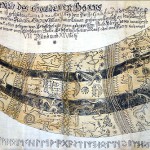
Golden Horns of Gallehus
The original Golden Horns of Gallehus, unique Bronze Age artefacts, were stolen and melted down in 1802, causing national uproar in Denmark and even inspiring a famous poem. In 2007, the replicas of the originals were also stolen.

HMS Duke of Albany
HMS Duke of Albany is a military vessel that was sunk during the First World War.
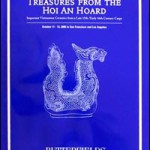
Hoi An Shipwreck
In 1997, following the arrest in Vietnam of two Japanese dealers attempting to illegally export antique ceramics, a license was granted by the Vietnamese government to a commercial salvage company to excavate the Hoi An (Cu Lao Cham) shipwreck. The subsequent auction of finds from the wreck was largely unsuccessful.

Jiroft
In 2001 a rich tomb was systematically looted at the Iranian site of Jiroft. Artefacts from this looting were trafficked out of Iran and several individuals involved were sentenced to death.

Morgantina Silver
A silver hoard removed from the Sicilian site of Morgantina by looters around in 1979/80 which was eventually purchased by the Metropolitan Museum of Art.
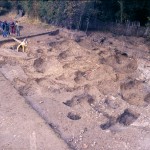
Nighthawk
The term ‘nighthawk’ is generally used to refer to an individual who knowingly uses a metal detector in illegal activity, particularly involving theft from a protected archaeological site and/or from private land.

Port Royal
Once a strategically significant port and fort located close to Kingston in Jamaica, Port Royal was largely submerged following an earthquake, which left its underwater remains vulnerable to treasure hunting and commercial salvage.
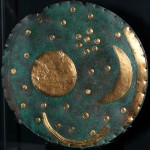
Raubgräber
‘Raubgrabung’ means ‘illegal excavation’ in German (literally ‘robbery dig’), and ‘Raubgräber’ is a term used to refer to those excavating an archaeological site illegally, usually involving the use of a metal detector.
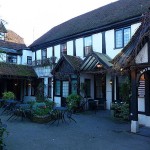
Salisbury Hoard
When a London antiquities dealer offered the British Museum rare Iron Age bronze miniature shields, it triggered the tracing of the origins of a unique and archaeologically significant, but illegally looted, hoard.

State Hermitage Museum Thefts 2006
In July 2006, the audit of one of the many collection inventories of the State Hermitage Museum, St Petersburg, revealed that over 200 objects had been stolen, with an estimated total value of 130 million rubles ($5 million USD or £2.76 million GBP).

Tchorniye arkheologi (‘Black archaeologists’ or чёрные археологи)
Different terms and nicknames are used across the world to describe illegal diggers of archaeological sites, such as tombaroli (in Italy), nighthawks (in the British Isles), and huecheros (Belize and Guatemala). In parts of Eastern Europe including the Russian Federation, and other post-Soviet states such as Moldova (Musteață 2010), and the Baltic states (Monitoring Group 2005: 19; Ulst 2010),...
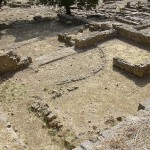
Tombarolo
‘Tombarolo’ is an Italian term (plural ‘tombaroli’), derived from the Italian word ‘tomba’, meaning tomb or grave.
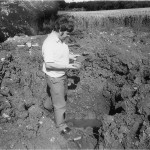
Wanborough
The Romano-British temple site at Wanborough in Surrey, England, was largely unknown and unstudied prior to a remarkable turn of events in the 1980s.
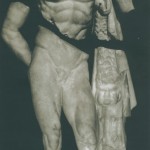
Weary Herakles
A Roman sculpture: the bottom half was archaeologically excavated at the Turkish site of Perge and the top half was looted and eventually placed on display at the Museum of Fine Arts, Boston, USA.

Yeavering Bell
‘A Northumberland National Park Voluntary Ranger patrol discovered the illegal excavations in the central area of Yeavering Bell, the largest hillfort in Northumberland and a scheduled ancient monument’ (Young 2002).
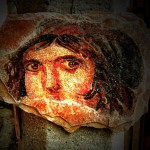
Zeugma Mosaics
The ancient site of Zeugma in Turkey, now partially inundated by a dam, has experienced extensive looting, particuarly for its fine mosaics.
